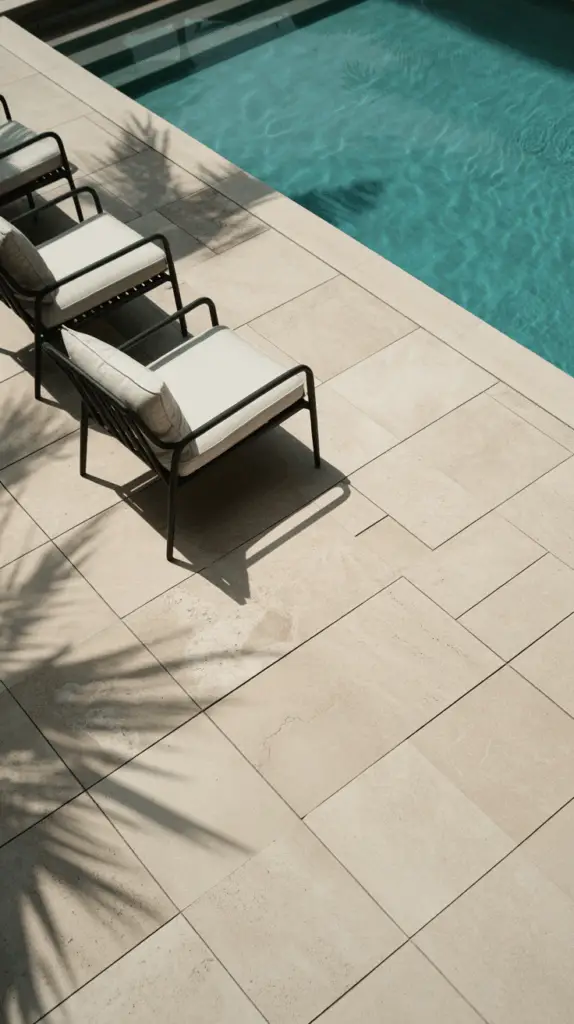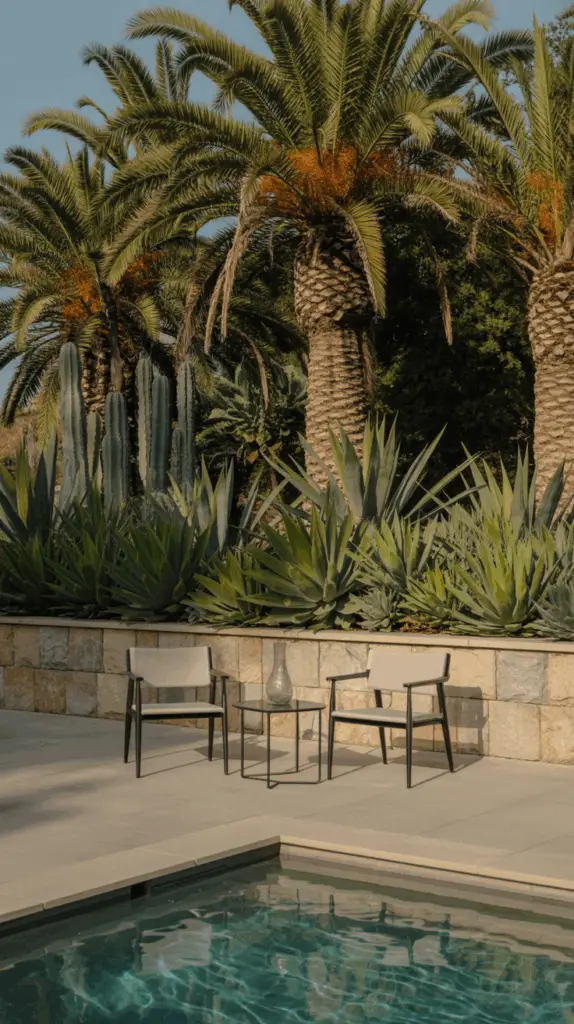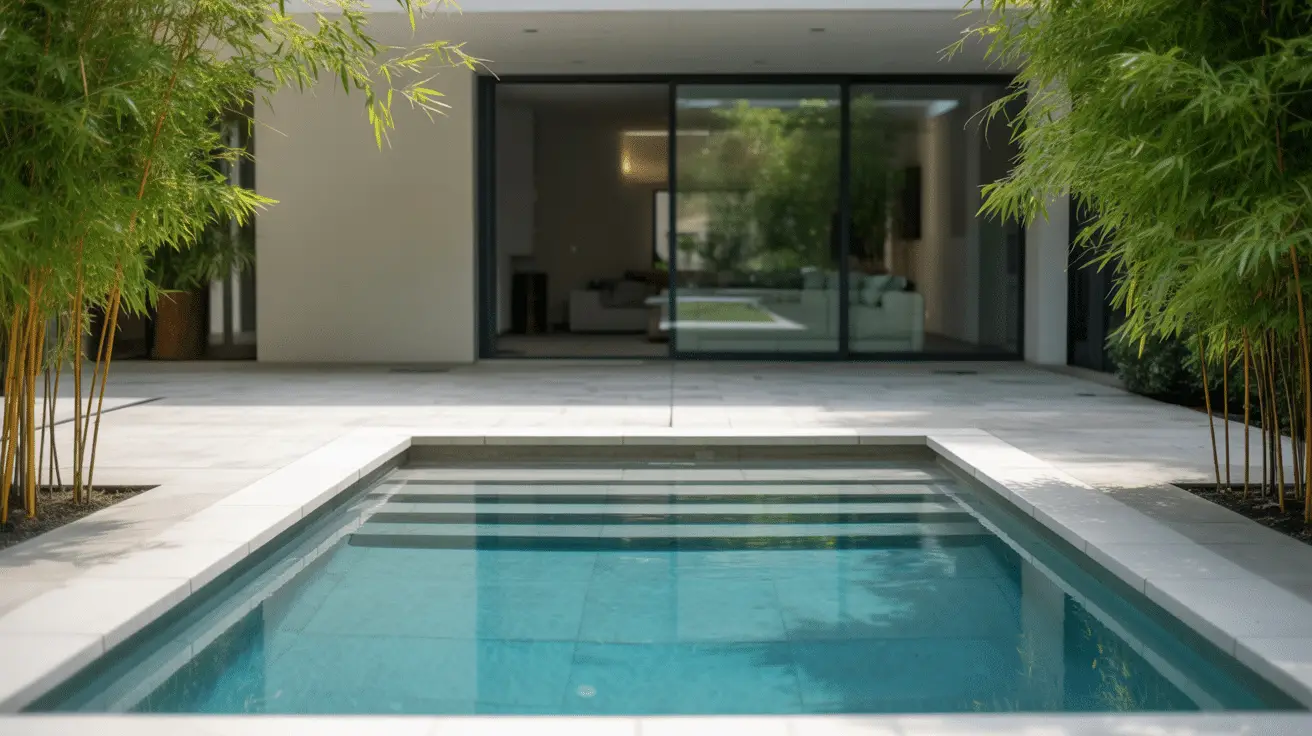Inground Pool Design Essentials Every Home Decor Enthusiast Should Know
Table of Contents
Designing a Backyard Oasis: Why Inground Pools Are the Ultimate Home Decor Upgrade
Imagine stepping into your backyard and being greeted by a seamless fusion of sleek architecture, water’s calming shimmer, and curated decor elements that feel like an extension of your interior style. That’s the magic of a well-designed inground pool.
Today, inground pools are no longer just about recreation—they’ve become key design features for homeowners who value aesthetics just as much as function. In fact, according to a recent study by the National Association of Realtors, a thoughtfully designed pool can boost perceived home value by as much as 7–15%, depending on the region and design quality. More than ever, home decor enthusiasts are treating outdoor spaces with the same intentionality they bring indoors.
But achieving a beautifully integrated pool design isn’t just about choosing a shape and calling a contractor. It’s about understanding spatial harmony, material coordination, lighting, landscaping, and the tiny details that turn a pool from standard to stunning.
This guide will walk you through the essentials of inground pool design from a decor-first perspective—whether you’re planning a new build or refreshing an existing layout. From material palettes and landscaping to lighting, furniture, and water features, we’ll explore how every choice plays a role in elevating your outdoor aesthetic.
Choosing the Right Pool Shape to Complement Your Home’s Architecture
One of the first design decisions you’ll make is the shape of your inground pool—and it should be anything but arbitrary. The right shape acts as a visual and spatial extension of your home’s architecture and surrounding landscape.
For modern homes, clean-lined rectangular pools or geometric shapes enhance a minimalist or contemporary aesthetic. These shapes feel structured and elegant, especially when paired with architectural landscaping or concrete decking. On the other hand, freeform or lagoon-style pools are better suited for homes with rustic, Mediterranean, or tropical vibes, offering a more organic flow that mimics nature.
Don’t forget to consider yard dimensions and traffic flow. A narrow yard might benefit from a lap pool, while a wide, open space could handle a larger, more sprawling design with integrated spas or tanning ledges.
Table: Pool Shapes and Matching Home Styles
| Pool Shape | Best for Architectural Style | Key Aesthetic Benefit |
| Rectangular | Modern, mid-century, industrial | Clean lines, symmetrical elegance |
| Freeform | Mediterranean, coastal, tropical | Natural flow, lush integration |
| Roman/Grecian | Classic, colonial, traditional | Sophisticated, timeless feel |
| Kidney | Mid-century modern, vintage-inspired | Soft curves, nostalgic charm |
| Lap Pool | Urban, contemporary, narrow lots | Sleek, functional, space-efficient |
Material Selection for Pool Surrounds That Elevate the Aesthetic
The materials you choose for your pool’s coping, decking, and surrounds are as important as the water itself. They define the tactile and visual feel of your entire outdoor space.
Natural stone, like travertine or slate, offers a timeless elegance and remains cool underfoot. Concrete can be customized with textures, colors, or aggregates to match any aesthetic—from rustic to ultra-modern. Porcelain pavers provide a high-end, low-maintenance alternative that blends beautifully with interior tiles, creating seamless indoor-outdoor flow.
Texture and tone also matter. Soft grays and beiges complement most home styles, while darker tones add dramatic contrast against turquoise water. Don’t forget non-slip finishes for safety, especially in family-friendly homes.
Table: Pool Deck Material Comparison
| Material | Visual Style | Pros | Cons |
| Travertine | Classic, natural | Cool, slip-resistant, elegant | Requires sealing |
| Concrete | Versatile, modern | Affordable, customizable | Can crack without control joints |
| Porcelain Pavers | Sleek, refined | Low maintenance, fade-resistant | More costly upfront |
| Wood/Composite | Warm, organic | Adds warmth, feels cozy | Needs regular upkeep or sealing |
| Slate | Rustic, bold | Rich texture, unique variations | Can be slippery when wet |

Strategic Landscaping for Seamless Indoor-Outdoor Harmony
Landscaping around your pool is more than just planting greenery—it’s about designing an environment that feels cohesive, intentional, and in conversation with your home decor style.
For a serene, spa-like experience, opt for layered tropical foliage like palms, bird of paradise, or banana plants. Mediterranean-inspired homes might benefit from olive trees, lavender, and ornamental grasses. Drought-tolerant succulents, agave, and creeping thyme are ideal for desert-modern designs.
Integrate planter boxes, vertical garden walls, or architectural hedges to frame your pool without cluttering it. Avoid messy trees that shed leaves into the water and choose low-maintenance perennials over high-maintenance seasonal blooms.
Thoughtfully placed greenery also provides shade, privacy, and a soft contrast to hardscaping materials.
Table: Landscaping Styles by Pool Theme
| Design Style | Ideal Plants and Features | Purpose |
| Tropical Oasis | Palms, hibiscus, banana leaves | Lush privacy and movement |
| Modern Minimalist | Agave, boxwood hedges, ornamental grass | Clean silhouettes, low upkeep |
| Mediterranean | Lavender, olive trees, rosemary | Aromatic, drought-tolerant |
| Rustic Natural | Ferns, river rock, native wildflowers | Organic flow, natural vibe |
| Urban Contemporary | Bamboo, climbing ivy, potted succulents | Sleek lines, vertical interest |

Incorporating Water Features That Enhance Ambiance
Water features can turn a standard pool into a multisensory experience. The gentle sound of flowing water introduces tranquility, while the movement adds dynamic visual interest.
Modern designs often include sheer descents—waterfalls that emerge from sleek stone walls—or scuppers that deliver thin streams of water into the pool. For a resort-like feel, consider adding a raised spa with a spillover feature or natural rock waterfall cascading into the pool.
These features are not just decorative—they help circulate water, which can assist with temperature regulation and filtration. Placement is also key. Waterfalls near seating areas enhance relaxation, while fountains at the far end of the pool can create a stunning focal point.
Table: Common Water Features and Their Effects
| Feature Type | Visual Impact | Sound/Ambiance Created |
| Sheer Descent | Sleek, contemporary | Gentle, smooth flow |
| Rock Waterfall | Natural, rustic | Soothing, babbling stream |
| Bubblers | Subtle, playful | Light bubbling, great for tanning ledges |
| Spa Spillover | Luxurious, integrated | Continuous soft cascade |
| Deck Jets | Dramatic, interactive | Splashy, kids love it |
Lighting Design That Sets the Mood Day and Night
A thoughtfully lit pool can transform a backyard into an after-dark sanctuary. Whether you want a soft glow for late-night swims or dramatic uplighting for visual impact, lighting plays a pivotal role in design.
Start with in-pool LEDs that can shift color for ambiance or remain neutral for a timeless feel. Pathway lighting, string lights, and lanterns extend usability and safety into the evening. For architectural flair, consider uplighting plants or feature walls around the pool.
Lighting should be layered just like interior design—ambient, accent, and task lighting work together to create dimension and depth.
Table: Pool Lighting Types and Their Function
| Lighting Type | Placement | Ideal Use |
| In-Pool LEDs | Within pool walls/floor | Illuminates water for safety |
| Wall Uplights | Around perimeter | Highlights landscaping or walls |
| Pathway Lighting | Walkways and steps | Ensures safe nighttime access |
| Hanging Fixtures | Pergolas, patios | Adds charm, defines seating areas |
| Spotlights | On focal plants or features | Adds drama and visual intrigue |
Outdoor Furniture and Styling to Complete the Look
Once your pool and landscaping are in place, it’s time to furnish the space to match your home’s design ethos. Think of it as your open-air living room—every element should serve both comfort and aesthetic value.
Opt for weatherproof furniture in materials that reflect your interior choices. Teak and acacia woods are great for natural or bohemian styles, while powder-coated aluminum suits modern and minimalist tastes. Choose neutral or earth-tone cushions for timelessness, and layer with throws or outdoor rugs for softness.
Also consider the functionality of your zones: include loungers by the pool’s edge, a dining set under a pergola, and side tables for drinks and books.
Table: Styling Elements for Poolside Decor
| Furniture Piece | Style Suggestion | Functionality Bonus |
| Lounge Chairs | Adjustable with neutral cushions | Relaxation and sunbathing |
| Dining Set | Woven or teak, seating for 6–8 | Perfect for outdoor meals |
| Umbrellas/Canopy | Neutral-toned canvas | Shade and temperature control |
| Side Tables | Lightweight, weatherproof | Handy for drinks/books |
| Outdoor Rug | Fade-resistant polypropylene | Defines lounging area |
Conclusion: A Holistic Approach to Pool Design for Style-First Homeowners
Designing an inground pool is about far more than digging a hole and filling it with water. For home decor enthusiasts, it’s an opportunity to expand their design language into the outdoors—creating a cohesive, calming, and visually impactful space that complements their interior style.
From choosing the right shape and materials to layering textures through landscaping, lighting, and furniture, each decision plays a role in curating a personal retreat. With thoughtful planning and an eye for design, your pool can become a central feature of your home’s aesthetic—not just a seasonal luxury, but a timeless extension of your lifestyle.

